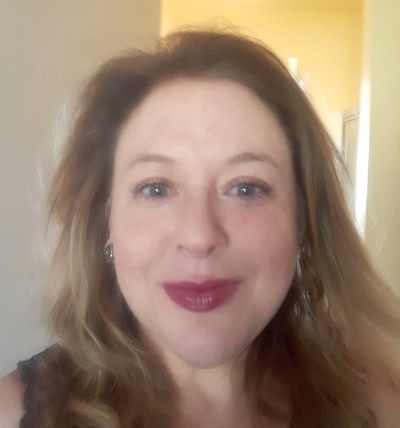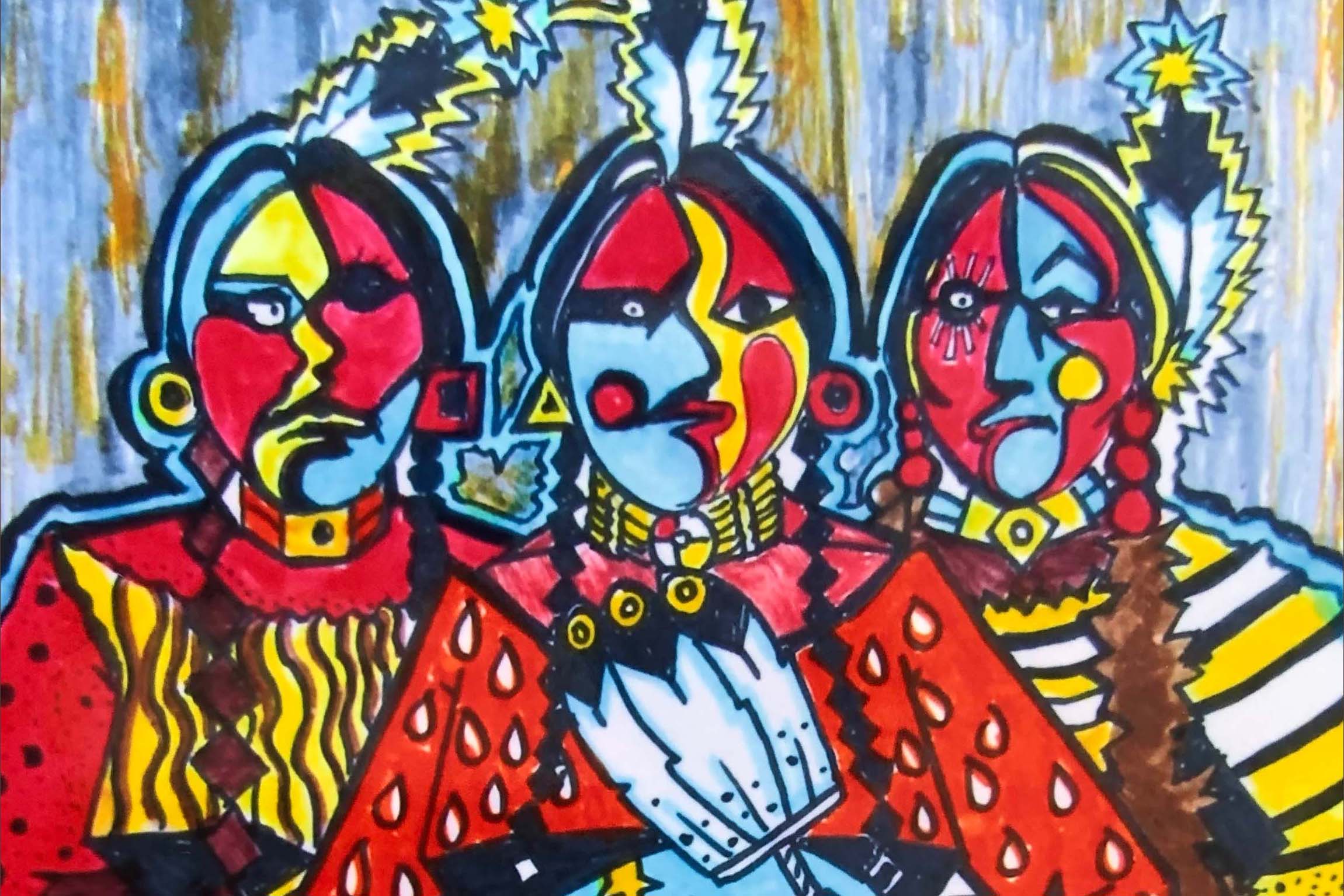
- Details
- By Tamara Ikenberg
Indian Country is ushering in 2022 with an array of tantalizing events and activities.
This weekend and next week you can indulge in opportunities to appreciate a deliciously decolonized art and food collaboration, purchase a very cool calendar of Alaska Native culture, build your own mini Choctaw chukka, and take in some surreally sensational art from an Oglala Lakota illustrator.
Let Native News Online’s event guide get your Native New Year going in the right direction.
NSRGNTS Mural at Wahpepah’s Kitchen
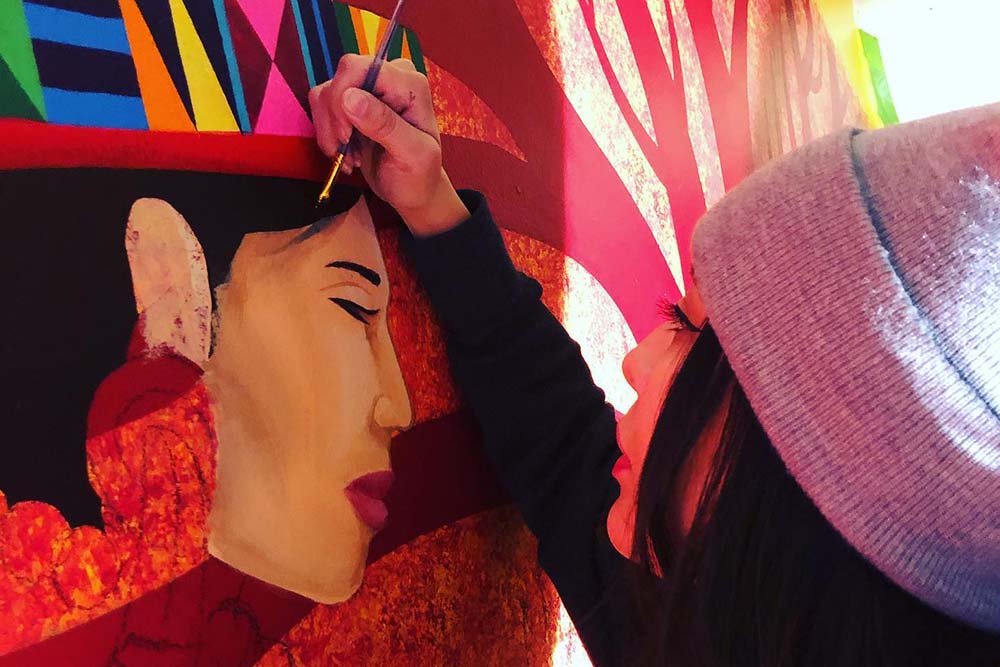 Votan Ik and Povi Marie of activist art collective NSRGNTS are creating a mural inside Indigenous food restaurant Wahpepah's Kitchen in Oakland, California. (NSRGNTS)
Votan Ik and Povi Marie of activist art collective NSRGNTS are creating a mural inside Indigenous food restaurant Wahpepah's Kitchen in Oakland, California. (NSRGNTS)
WHEN: In progress
WHERE: Wahpepah’s Kitchen, 3301 East 12th St., Suite 33, Oakland, CA
In Oakland, indigenous art and food are uniting in a mouthwatering and meaningful mural at the award-winning Wahpepah’s Kitchen.
It all started when Povi Marie and Votan Henriquez of art and activism collective NSRGNTS met Kickapoo chef Crystal Wahpepah years ago at a Hollywood Hills dinner party.
“We talked for hours and had so much in common when it came to goals, thinking big, and advocating for Indigenous people that it was easy to become quick friends,” Povi Marie told Native News Online. “Crystal said she had plans of one day opening a restaurant. “
Wahpepah’s plans came to pass last year with the opening of Wahpepah’s Kitchen. The artwork of the NSRGNTS duo, who are known for their awe-inspiring, large-scale murals at Navajo Nation, the American Indian Community Housing Organization in Duluth, and beyond, remained in the back of her mind.
“In the process of opening the restaurant, she had a dream where we were painting a mural on the restaurant wall,” Marie told Native News Online. “She then shared with us the dream, and within a couple months we were planning for it to take place. It just so happened that everything was in alignment and it came to fruition quickly.”
For the last few weeks, the artists have been focused on bringing the tribute to decolonization and Indigenous food culture to life.
Povi Marie said the mural features five Indigenous characters representing continental regions where specific foods and Native cultures thrive, and centers around a tree of life symbolizing community and the diverse Oakland area.
“The specific regions the characters represent contributed their foods to the world's gastronomy, which are now being served at Wahpepah's Kitchen,” Marie said. “The first character is an Aymara man native to Bolivia and Peru, holding a plate of potatoes, which were originally cultivated within those two countries. The second character is a Maya woman bringing corn from its place of origin, ancient Mexico and Central America. The third character is a Kickapoo woman holding squash, which is common in North American tribal gastronomy. The fourth character is an Ohlone woman holding a bowl of acorns and berries, which are a staple in the diets of many tribes throughout California. And the fifth character is a Lakota man offering bison meat, which was hunted across the plains of North America and Canada.”
A grand mural unveiling will take place in mid-February. Stay tuned to Native News Online for more details.
Edward S. Curtis: Unpublished Alaska Wall Calendar
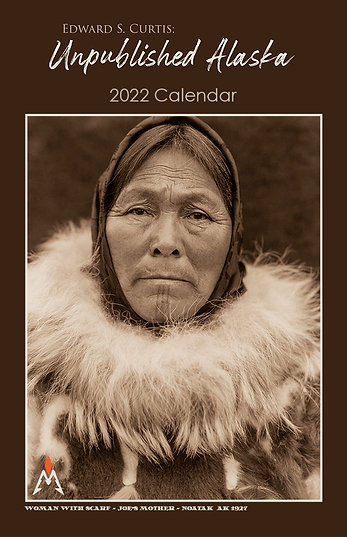 The Edward S. Curtis: Unpublished Alaska 2022 Wall Calendar is on sale now for $24.95 at curtislegacyfoundation.org. (Curtis Legacy Foundation)WHEN: Available now
The Edward S. Curtis: Unpublished Alaska 2022 Wall Calendar is on sale now for $24.95 at curtislegacyfoundation.org. (Curtis Legacy Foundation)WHEN: Available now
WHERE: Purchase here; $24.95
The new Edward S. Curtis Unpublished Alaska Wall Calendar will fill your days with the faces, places, and customs captured during an epic photographic journey.
In 1927, Curtis ventured to Nome and the Bering Sea to visually chronicle the world of the Indigenous people of areas including Little Diomede Island, King Island, Nunivak Island, Hooper Bay, King Island, and Cape Prince of Wales.
Many of the images appear in The Alaskan Eskimo, the 20th and final volume of Curtis’ epic life’s work: The North American Indian.
But a wealth of Curtis’ photography didn’t appear in the original volumes, and more than 100 additional images found by Curtis’ great grandson, John Graybill, and Graybill’s wife, Coleen, were shown to the public for the first time last year, both at an exhibit at Michigan’s Muskegon Museum of Art, in an exhibition titled Unpublished Alaska: The Lost Photographs.
For the new wall calendar, those recently rediscovered images have been distilled down to twelve photos accompanied by Curtis’ journal entries. The year of glimpses into Alaska Native culture includes the smiling faces of Nunavik Island women, folks hauling kayaks on rocky shores, and plush, fantastic furry parkas. Each month also includes many important Native American and Alaska Native historical dates.
To learn more about Curtis and his work, read Native News Online’s story about the exhibit at the Muskegon Museum of Art.
Indigenous Expressions Open House
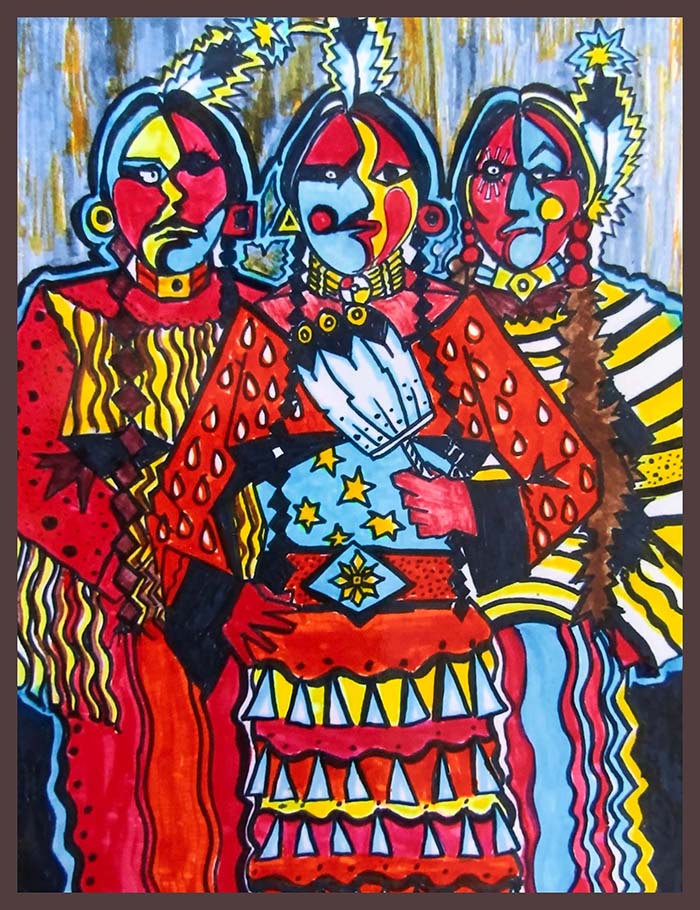 Three Sisters by Oglala Lakota illustrator David Ben White. (David Ben White)WHEN: Saturday, Jan. 8, 2 p.m. to 4 p.m. Exhibit runs through Friday, Feb. 25
Three Sisters by Oglala Lakota illustrator David Ben White. (David Ben White)WHEN: Saturday, Jan. 8, 2 p.m. to 4 p.m. Exhibit runs through Friday, Feb. 25
WHERE: Watermark Art Center, 505 Bemidji Avenue N., Bemidji, Minnesota
Oglala Lakota illustrator David Ben White unofficially began his art career drawing artwork for the newsletter of the Montana Childrens’ Home, aka “The Orphan’s Home,” where he lived until being adopted at age 9.
Today, the resilient artist resides on the Red Lake Reservation in Ponemah, Minnesota, where he converts his experiences and inspirations into colorful, eye-catching illustrations.
His new exhibit Indigenous Expressions is an exploration of Indigenous art, culture, and traditions powered by surrealist style and Lakota and Anishinaabe stories.
With waves of striking shades and Picasso-esque distortions, his images celebrating the majesty of the buffalo, Native women, music and dancing, pulsate with electric energy and vibrancy.
For more information on the show and the artist, visit watermarkartcenter.org or call 218-444-7570.
Build Your Chukka Workshop
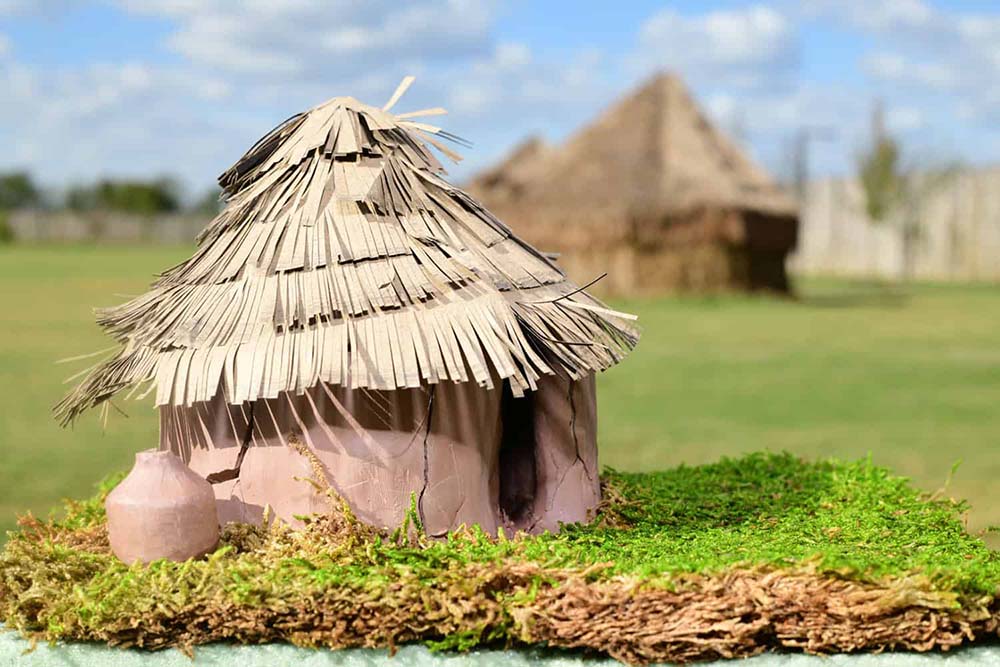 A chukka is a traditional Choctaw winter home. The Choctaw Cultural Center in Calera, Oklahoma will host The Build Your Chukka Workshop, in which participants will build mini chukkas, on Saturday, Jan. 8 and Saturday, Jan. 15. (Choctaw Nation)
A chukka is a traditional Choctaw winter home. The Choctaw Cultural Center in Calera, Oklahoma will host The Build Your Chukka Workshop, in which participants will build mini chukkas, on Saturday, Jan. 8 and Saturday, Jan. 15. (Choctaw Nation)
WHEN: Saturday, Jan. 8 and Saturday, Jan. 15, 2:30 p.m. to 3:30 p.m.
WHERE: Choctaw Cultural Center, 1919 Hina Hanta Way, Calera, OK; Free with a paid admission. Admission is free for Choctaw Nation tribal members.
When the cold winter winds started blowing, the ancestors of today’s Choctaw people would get busy building domed straw and clay homes known as chukkas.
Through January workshops at the Choctaw Cultural Center, the descendants of the chukka-building Choctaws and anyone else who is interested have the chance to learn what went into constructing these traditional dwellings, and to create a mini chukka model for themselves out of clay and wood.
Revisiting and remaking the chukka is just one of the opportunities to dive into Choctaw culture that the center, which opened in July of last year, is offering this month.
Other events and activities include storytelling stickball and social dancing exhibitions, storytelling, as well as hide tanning and pottery classes. For the full schedule, click here.
More Stories Like This
Chickasaw Holiday Art Market Returns to Sulphur on Dec. 6Center for Native Futures Hosts Third Mound Summit on Contemporary Native Arts
Filmmakers Defend ‘You’re No Indian’ After Demand to Halt Screenings
A Native American Heritage Month Playlist You Can Listen to All Year Long
11 Native Actors You Should Know
Help us defend tribal sovereignty.
At Native News Online, our mission is rooted in telling the stories that strengthen sovereignty and uplift Indigenous voices — not just at year’s end, but every single day.
Because of your generosity last year, we were able to keep our reporters on the ground in tribal communities, at national gatherings and in the halls of Congress — covering the issues that matter most to Indian Country: sovereignty, culture, education, health and economic opportunity.
That support sustained us through a tough year in 2025. Now, as we look to the year ahead, we need your help right now to ensure warrior journalism remains strong — reporting that defends tribal sovereignty, amplifies Native truth, and holds power accountable.
 The stakes couldn't be higher. Your support keeps Native voices heard, Native stories told and Native sovereignty defended.
The stakes couldn't be higher. Your support keeps Native voices heard, Native stories told and Native sovereignty defended.
Stand with Warrior Journalism today.
Levi Rickert (Potawatomi), Editor & Publisher

